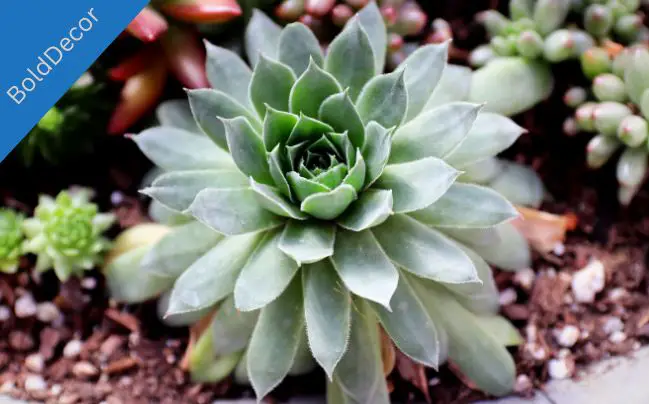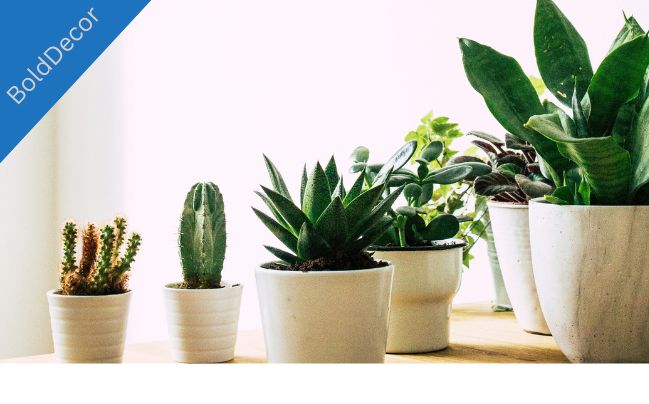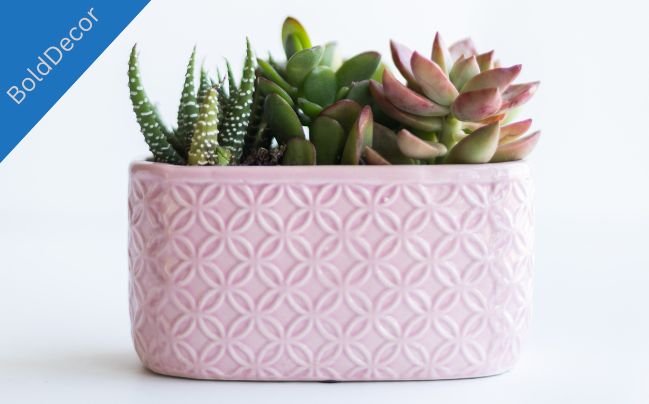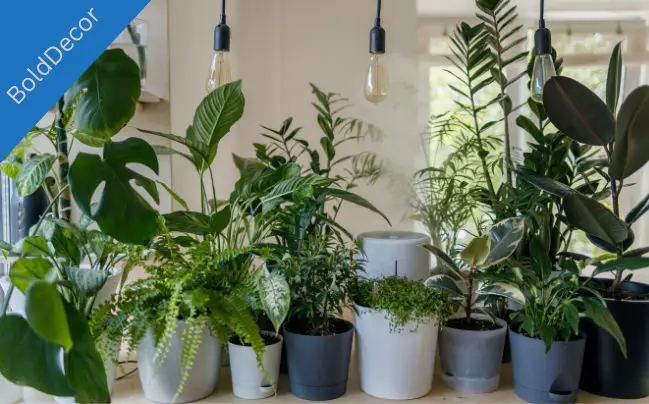As someone who loves plants and wants to improve the air quality in my home, I did some research and discovered that certain houseplants are known for their air-purifying properties. Not only do these plants add a touch of green to your home, but they also help filter out toxins and improve air quality.
In this post, we’ll explore the top 10 houseplants that are the best for clean air.
Key Takeaways
- Houseplants can help purify the air in your home
- Certain plants are known for their air-purifying properties
- Adding plants to your home can improve air quality
- These top 10 houseplants are the best for clean air
- Consider adding these plants to your indoor garden for fresher, healthier air
Table of Contents
Air-Cleaning Houseplants
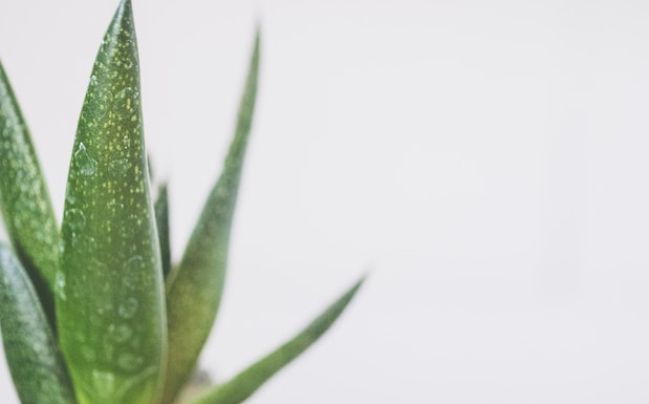
When it comes to choosing air-cleaning houseplants, there are plenty of options to choose from. Snake Plant, Spider Plant, and Dracaena are all great at filtering out harmful toxins from the air. Boston Fern and Peace Lily are excellent choices for those looking to add some greenery to their homes while also improving air quality.
Regardless of which plants you choose, incorporating indoor plants into your living space is an easy and affordable way to improve the air quality in your home. Plus, there’s no denying the beauty and tranquility that plants can bring to any room.
1). Peace Lily (Spathiphyllum)

The Peace Lily is one of the most popular air-purifying indoor plants and is perfect for those who are new to gardening. Not only does it add a touch of elegance to any room with its beautiful white blooms, but it is also great at detoxifying indoor air. It effectively removes common indoor pollutants like formaldehyde, benzene, and carbon monoxide.
As an indoor air detoxifying plant, the Peace Lily is a low-maintenance plant that thrives in shade and low light conditions. It is easy to care for and only needs to be watered once a week. The Peace Lily also helps to increase humidity levels in the room, which relieves dry skin and reduces the occurrence of colds, coughs, and sore throats.
Table: Peace Lily Care
| Lighting | Watering | Fertilizing |
|---|---|---|
| Low to Medium light | Water once a week | Feed every 2-3 months |
“I love having Peace Lilies in my home not just for their air-purifying properties, but also for their graceful and elegant presence. These plants are easy to care for and have helped to improve the air quality in my living space.”
If you are looking for an air-purifying plant that is both beautiful and practical, the Peace Lily is an excellent choice. It is a natural air purifier that can make your living space cleaner, healthier, and more inviting.
2). Air-Filtering Indoor Plants: Snake Plant (Sansevieria)

One of the best indoor air detoxifying plants is the Snake Plant, also known as Sansevieria. This plant is a popular choice among homeowners who want to improve the air quality in their homes. It is also low maintenance and can tolerate low light conditions, making it easy to care for.
The Snake Plant is known for its air-filtering properties, especially in removing toxins like benzene, formaldehyde, trichloroethylene, and xylene. According to a NASA study, Snake Plants are one of the plants that can remove harmful toxins from the air, making it a perfect choice for those who live in urban areas with heavy pollution.
| Toxins Removed by Snake Plant | Source |
|---|---|
| Benzene | Paints, oils, plastics, and rubber products |
| Formaldehyde | Paper products, carpets, particleboard, and plywood |
| Trichloroethylene | Printing inks, paints, varnishes, and adhesives |
| Xylene | Printing, leather, and paint industries |
Aside from its air-purifying properties, the Snake Plant also adds style and texture to any room. Its long, pointed leaves come in different shades of green and yellow, making it a beautiful addition to any indoor garden. The plant also produces white or cream-colored flowers, adding a touch of elegance to any space.
If you’re looking for a low-maintenance indoor air detoxifying plant, the Snake Plant is an excellent choice. It’s an effective toxin remover and comes in various sizes and shapes, making it adaptable to any indoor environment. Plus, it adds a stunning aesthetic to your home while providing clean air to breathe.
3). Boston Fern (Nephrolepis exaltata)
If you’re looking for a beautiful and effective air-cleaning houseplant, the Boston Fern is an excellent choice. Not only does it add a touch of greenery to your home, but it also removes harmful toxins from the air.
| Toxins removed: | Formaldehyde | Xylene | Toluene |
|---|
The Boston Fern is a versatile plant that can thrive in a variety of indoor environments, making it a popular choice for those looking to improve their indoor air quality. Its lush foliage and air-purifying abilities make it a great addition to any home.
- Air-cleaning houseplants: Boston Ferns are effective at removing harmful toxins from the air, improving the overall air quality in your home.
- Plants that remove toxins from air: The Boston Fern is known for its ability to filter out formaldehyde, xylene, and toluene.
Frankly speaking, when it comes to improving indoor air quality, air-purifying indoor plants are the perfect solution. They not only add natural beauty to your indoor space but also filter out toxins, making the air fresher and healthier. In this section, I’ll introduce you to some of the best air-purifying indoor plants that you can add to your home.
4). Spider Plant (Chlorophytum comosum)
The Spider Plant is a popular choice among indoor plant enthusiasts due to its easy maintenance and air-purifying abilities. This plant is a natural air cleaner that can remove formaldehyde and xylene from the air. Additionally, it produces small plantlets that can be propagated and shared with friends and family.
5). Aloe Vera (Aloe barbadensis)
Aloe Vera is a well-known plant for its various medicinal properties, and it is also a natural air purifier. This plant is known to filter out formaldehyde and benzene, making it an excellent choice for improving indoor air quality. Aloe Vera requires moderate to bright light and minimal watering, making it an easy plant to care for.
6). Bamboo Palm (Chamaedorea seifrizii)
The Bamboo Palm is a beautiful, tropical plant that can add a touch of greenery to your home. It can also remove common indoor pollutants such as formaldehyde, benzene, and carbon monoxide from the air. This plant thrives in bright, indirect light and requires moderate watering.
- Spider Plant removes formaldehyde and xylene from the air
- Dracaena removes benzene, formaldehyde, trichloroethylene, and xylene from the air
- Aloe Vera filters formaldehyde and benzene from the air
- Bamboo Palm removes formaldehyde, benzene, and carbon monoxide from the air
“Adding air-purifying indoor plants to your home not only improves air quality but also adds natural beauty to your indoor space.”
These air-purifying indoor plants can be an excellent addition to your home. They are all easy to care for and can help improve the air quality in your living space. With so many options to choose from, you can find the perfect air-purifying indoor plant to fit your style and preferences.
7). Aloe Vera (Aloe barbadensis)
As a content writer who is passionate about houseplants, I can’t help but rave about the Aloe Vera plant. Not only is it an excellent natural air purifier, but it also has numerous medicinal properties.
Aloe Vera is a succulent plant that is easy to care for and thrives in bright, indirect light. It is known for its ability to filter out harmful toxins like formaldehyde and benzene, making it a great choice for clean air houseplants.
Additionally, Aloe Vera has various health benefits. Its leaves contain a clear gel that can be used for treating burns, cuts, and other skin irritations. It also has anti-inflammatory and antioxidant properties.
Adding an Aloe Vera plant to your indoor garden not only improves air quality but also provides a natural remedy for common ailments.
8). Dracaena (Dracaena spp.)
Dracaena plants are some of the best houseplants for clean air, as they are known for their air-purifying abilities. These hardy plants come in a variety of shapes and sizes and can remove toxins like benzene, formaldehyde, trichloroethylene, and xylene from the air, improving the air quality in your home.
Not only are these plants great for purifying the air, but they’re also easy to care for, making them perfect for those with a busy lifestyle. They can thrive in low light conditions, and only need to be watered once a week.
| Pros | Cons |
|---|---|
| Effective at removing toxins from the air | Can be toxic to pets |
| Comes in a variety of shapes and sizes | Some species can be sensitive to certain types of water |
| Easy to care for | May require frequent dusting to prevent spider mites |
If you’re looking for a low-maintenance, air-purifying plant for your home, a Dracaena is an excellent choice. Just make sure to keep it out of reach of pets, as some species can be toxic if ingested.
9). Natural Air Purifiers: English Ivy
English Ivy (Hedera helix) is a beautiful vine with glossy green leaves that can grow up to 50 feet long. This indoor plant is not only an excellent addition to your home decor, but it is also a natural air purifier.
According to a study by NASA, English Ivy is effective in removing formaldehyde from the air. This volatile organic compound (VOC) is commonly found in household products such as cleaning solutions, building materials, and furniture. Exposure to formaldehyde can cause irritation to the eyes, nose, and throat, and in higher concentrations, can lead to more severe health issues such as cancer.
In addition to its air-purifying properties, English Ivy is also easy to grow and care for. It thrives in bright, indirect light and moderate humidity, making it ideal for indoor environments. English Ivy can be grown in hanging baskets or trained to climb up walls, adding a touch of green to your space while improving air quality.
10). Bamboo Palm (Chamaedorea seifrizii)
Do you want to add a tropical touch to your home while improving the air quality? The Bamboo Palm might be the perfect houseplant for you! Not only does it remove common indoor pollutants like formaldehyde, benzene, and carbon monoxide, but it also adds a touch of greenery to your space.
| Pollutants Removed | Care Level | Lighting Needs | Size |
|---|---|---|---|
| Formaldehyde, benzene, carbon monoxide | Easy | Bright, indirect light | Up to 12 feet tall |
This indoor plant can grow up to 12 feet tall, making it a statement piece in any room. Although it requires bright, indirect light, it is relatively easy to care for and does not require frequent watering.
If you are looking for a unique indoor plant that can remove toxins from the air and add a tropical vibe to your room, the Bamboo Palm might be the perfect fit. Consider adding it to your collection of air-purifying houseplants!
Selecting Houseplants for Optimal Air Quality
Choosing the right houseplants for your home based on air quality needs can have several benefits, as certain plants are known for their air-purifying properties. Here are some tips to help you select the right houseplants for improved indoor air quality:
- Identify Your Needs:
- Different plants excel at removing specific pollutants. Identify the particular air quality issues you want to address, such as benzene, formaldehyde, or volatile organic compounds (VOCs).
- NASA Clean Air Study:
- Refer to the NASA Clean Air Study, which identified houseplants that are effective at removing common indoor pollutants. Some examples include spider plants, snake plants, and peace lilies.
- Consider Plant Size:
- Take into account the size of the room when choosing houseplants. Larger rooms may benefit from more or larger plants to achieve the desired air-purifying effects.
- Low-Maintenance Plants:
- Choose plants that suit your lifestyle and level of gardening expertise. Low-maintenance options like snake plants, pothos, or spider plants are great for beginners.
- Pet-Friendly Plants:
- If you have pets, make sure the plants you choose are non-toxic to them. Common pet-friendly options include spider plants, Boston ferns, and areca palms.
- Light Requirements:
- Consider the lighting conditions in your home. Some plants thrive in low light, while others require more sunlight. Match the plant’s light requirements with the available natural light in your space.
- Variety of Plants:
- Create a diverse indoor garden with a variety of plants. Different species can work together to provide a range of air-purifying benefits.
- Placement Matters:
- Strategically place plants in areas where you spend the most time, such as living rooms and bedrooms. This maximizes the air-cleaning benefits in frequently occupied spaces.
- Monitor Soil Moisture:
- Overwatering can lead to mold growth, while underwatering may hinder a plant’s air-purifying abilities. Find the right balance by monitoring and adjusting your watering routine accordingly.
- Grouping Plants:
- Grouping plants together can create a microclimate with higher humidity, benefiting certain types of plants and potentially improving overall air quality.
- Rotate Plants:
- Rotate your plants regularly to ensure all sides receive adequate light exposure. This helps plants grow more evenly and enhances their air-purifying capabilities.
- Be Patient:
- Give your plants time to adapt and grow. It may take a while before you notice a significant improvement in air quality, especially if the plants are small or newly purchased.
Remember that while houseplants can contribute to better indoor air quality, they are not a substitute for proper ventilation and other measures to maintain a healthy living environment. Regular cleaning, good ventilation, and minimizing the use of household pollutants are also essential for maintaining clean indoor air.
The Benefits of Air-Cleaning Houseplants
Indoor air pollution is a growing concern, as we spend more time indoors than ever before. Common pollutants such as formaldehyde, benzene, and trichloroethylene can be found in many household products and can have harmful effects on our health. Air-cleaning houseplants like English Ivy can help to reduce these pollutants and improve the air quality in your home.
Another benefit of air-cleaning houseplants is their ability to release oxygen into the air. During photosynthesis, plants absorb carbon dioxide and release oxygen, improving the oxygen levels in your home. This makes air-cleaning houseplants a natural choice for creating a healthier indoor environment.
“English Ivy is effective in removing formaldehyde from the air.”
Adding Air-Cleaning Houseplants to Your Home
If you’re looking to improve the air quality in your home, adding air-cleaning houseplants like English Ivy is an excellent place to start. In addition to English Ivy, there are many other indoor plants that can help to purify the air, such as the Peace Lily, Snake Plant, and Boston Fern.
When choosing air-cleaning houseplants, it’s important to consider your home’s lighting conditions and humidity levels. Some plants, like English Ivy, prefer bright, indirect light, while others, such as the Snake Plant, can thrive in low light conditions. By doing a little research, you can select the best air-cleaning houseplants for your specific needs and indoor environment.
- English Ivy is a beautiful vine with glossy green leaves.
- It is effective in removing formaldehyde from the air.
- English Ivy is easy to grow and care for.
- Air-cleaning houseplants like English Ivy can help to reduce pollutants in your home.
- Air-cleaning houseplants release oxygen into the air, making your indoor environment healthier.
- Consider your home’s lighting and humidity levels when selecting air-cleaning houseplants.
Why Use Indoor Plants for Clean Air
As a copywriting journalist, I strongly advocate for incorporating air-cleaning houseplants as a way to improve the overall air quality in your home. Not only do these plants add a touch of nature to your living space, but they also offer numerous health benefits.
Plants that Remove Toxins from Air
Indoor plants are natural air purifiers that can effectively remove harmful toxins from the air. Formaldehyde, benzene, and carbon monoxide are common pollutants found in many homes, and certain plants have been proven to filter out these chemicals.
Bamboo Palm, English Ivy, and Aloe Vera are just a few examples of natural air purifiers that are great at removing toxins from the air. By simply placing these plants in your home, you can breathe easier knowing that the air you are inhaling is cleaner and healthier.
Natural Air Purifiers
In addition to removing toxins from the air, indoor plants also act as natural air purifiers by releasing oxygen. This process can make the air in your home fresher and healthier, leading to increased productivity and a better overall mood.
Not only that, but plants have also been shown to reduce stress levels and increase feelings of calmness and relaxation. Adding a few air-cleaning houseplants to your living space can create a more serene environment that promotes overall well-being and positivity.
Bottom line
Incorporating air-purifying houseplants into your home is a simple and effective way to improve indoor air quality and promote a healthier living environment. Not only do these plants filter out harmful toxins, but they also release oxygen and add a touch of greenery to your space.
Remember to choose the right plant for the right location in your home, as different plants have different light and humidity requirements. With the wide variety of air-cleaning houseplants available, you are sure to find the perfect fit for your home.
FAQ
What are the benefits of having indoor plants that clean the air?
Indoor plants that clean the air not only remove harmful toxins but also release oxygen, making the air in your home fresher and healthier.
What are the top 10 houseplants that purify the air?
The top 10 houseplants that purify the air include Peace Lily, Snake Plant, Boston Fern, Spider Plant, Aloe Vera, Dracaena, English Ivy, and Bamboo Palm.
How do Peace Lilies purify the air?
Peace Lilies are known for their ability to remove common indoor pollutants such as formaldehyde, benzene, and carbon monoxide.
What toxins do Snake Plants filter out?
Snake Plants are excellent at filtering out toxins such as benzene, formaldehyde, trichloroethylene, and xylene.
What pollutants does Boston Fern remove from the air?
Boston Ferns are known to remove pollutants like formaldehyde, xylene, and toluene from the air.
How does the Spider Plant improve air quality?
Spider Plants are excellent at removing formaldehyde and xylene from the air, making them a great choice for improving indoor air quality.
What makes Aloe Vera a natural air purifier?
Aloe Vera effectively filters out formaldehyde and benzene from the air, making it a popular choice for improving indoor air quality.
How do Dracaena plants purify the air?
Dracaena plants can remove toxins like benzene, formaldehyde, trichloroethylene, and xylene, improving the air quality in your home.
How does English Ivy purify the air?
English Ivy is highly effective at removing formaldehyde from the air, making it a great choice for improving indoor air quality.
What pollutants does Bamboo Palm remove from the air?
Bamboo Palm is known for removing common indoor pollutants like formaldehyde, benzene, and carbon monoxide.

